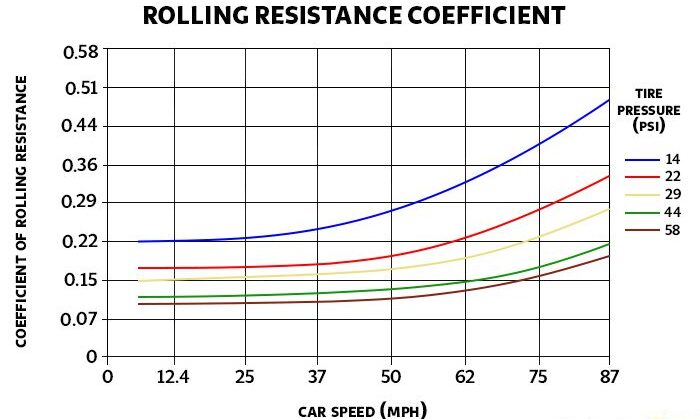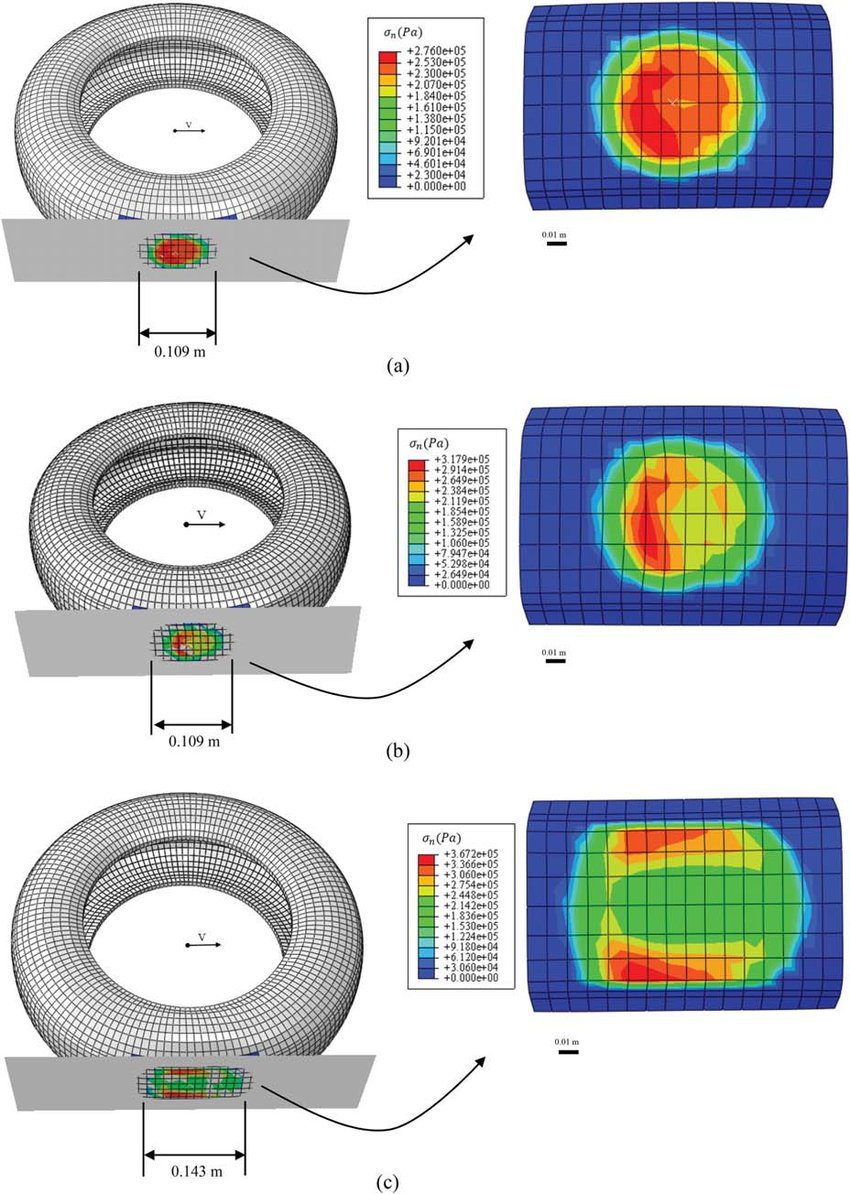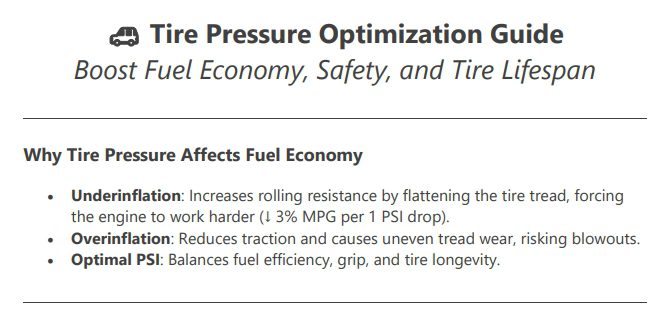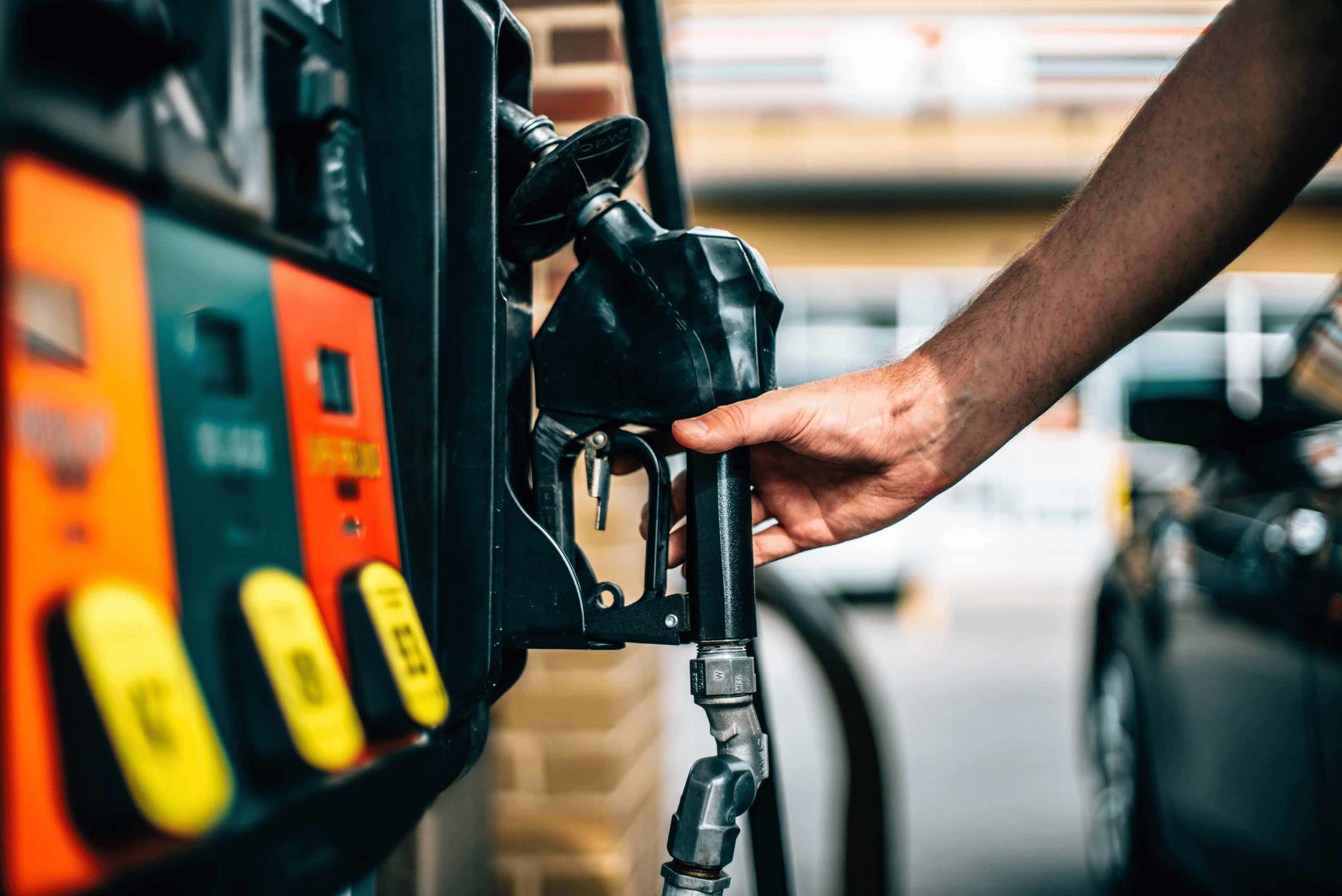Discover the Science Behind PSI and Fuel Efficiency—Plus Easy Fixes to Save Money and the Planet!
1. The Critical Link Between Tire Pressure and Fuel Economy
Tire pressure directly impacts your car’s fuel efficiency through rolling resistance—the force opposing motion as tires roll. Under-inflated tires flatten against the road, increasing friction and forcing your engine to work harder. This wastes fuel, accelerates tire wear, and even raises emissions.
Key Stat: For every 1 PSI drop in tire pressure, fuel economy decreases by 0.2% (U.S. Department of Energy).
Example: Driving with tires 5 PSI underinflated = 1% lower MPG, costing the average driver $65+ annually in wasted gas.

2. The Science of Rolling Resistance
- Under-Inflation:
- Increases tire deformation (flexing), converting energy into heat.
- Expands the tire’s contact patch, raising friction with the road.
- Proper Inflation:
- Maintains optimal tire shape, minimizing energy loss.
- Reduces strain on the engine and brakes.
Pro Tip: Tires lose ~1 PSI/month naturally and 1 PSI per 10°F temperature drop. Check monthly!

3. How to Optimize Tire Pressure for Maximum MPG
Step 1: Find Your Car’s Recommended PSI
- Source: Driver’s door jamb sticker or owner’s manual (NOT the tire sidewall!).
- Range: Most cars require 32–35 PSI (varies by vehicle and load).
Step 2: Use a Quality Tire Gauge
- Best Tools: Digital or dial gauges (10–20) for accuracy.
- When to Check: When tires are “cold” (undriven for 3+ hours).
Step 3: Inflate to the Correct PSI
- Gas Station Tip: Use a portable compressor (30–50) for home use.
- Nitrogen vs. Air: Nitrogen leaks slower, but regular air works fine for most drivers.
Step 4: Monitor Regularly
- Monthly Checks: Add to your calendar.
- TPMS: Modern cars alert you to pressure drops, but don’t rely solely on it—manual checks catch slow leaks.
4. Common Mistakes to Avoid
- Over-Inflation: Risks uneven tread wear and reduced traction.
- Ignoring Temperature: Cold mornings = lower PSI; adjust seasonally.
- Using Old Gauges: Cheap stick gauges often lie—upgrade to digital.
Case Study: A 2020 Toyota Camry driver improved MPG from 28 to 31 by fixing 6 PSI underinflation.
5. Beyond Fuel Savings: Safety and Environmental Benefits
- Safety: Properly inflated tires improve braking, handling, and reduce blowout risks.
- Eco Impact: Maintaining optimal PSI cuts CO₂ emissions by 1,200 lbs/year for the average driver.
- Tire Longevity: Correct pressure prevents premature wear, saving $300+ on replacements.
6. FAQs
Q1: Can I trust my car’s tire pressure warning light?
A: TPMS alerts only when pressure is 25% below recommended—manual checks catch smaller drops.
Q2: Does over-inflation boost MPG?
A: Slightly, but it’s unsafe. Stick to the manufacturer’s PSI.
Q3: How does tire pressure affect EVs?
A: EVs are heavier—underinflation hurts range even more (up to 10% loss!).
Q4: What if my tires heat up while driving?
A: Pressure rises ~5 PSI when hot. Never deflate hot tires—adjust when cold.
Q5: Are run-flat tires different?
A: Yes—they often require higher PSI. Check your manual.
7. Free Tire Pressure Optimization Guide
[🔗 Download Your Free PDF Here]
Includes:
- PSI lookup table for top car models.
- Seasonal adjustment tips.
- DIY leak detection steps.

Final Tips
- Label Your Tires: Use a tire marker to note PSI on each wheel.
- Teach Others: Share this guide to spread fuel-saving habits.
- Go Green: Pair proper inflation with eco-driving (smooth acceleration, reduced idling).
🚘 Share this guide to help friends save money and drive greener! 🚘
Expand Your Automotive Knowledge 📝
Explore 500+ Free Expert-Curated Guides
🚗 Learn New Skills
From basic maintenance to advanced repairs — clear, actionable tutorials for every skill level.
🌍 Access Anywhere
Mobile-friendly guides with HD visuals. No downloads required.
- Guides & Tutorials
- Car Maintenance 101
- Diagnostics & Troubleshooting
- Seasonal Maintenance
- Budget-Friendly Repairs
- Electrical Systems Guide
- Car Safety & Reliability
- Tools & Product Reviews
- Routine Maintenance
- Car Modifications & Upgrades
- Buying/Selling Guides
- Eco-Friendly Car Care
- Advanced Repairs
- Car Laws & Compliance
- Emergency Repairs
- Future Car Tech


